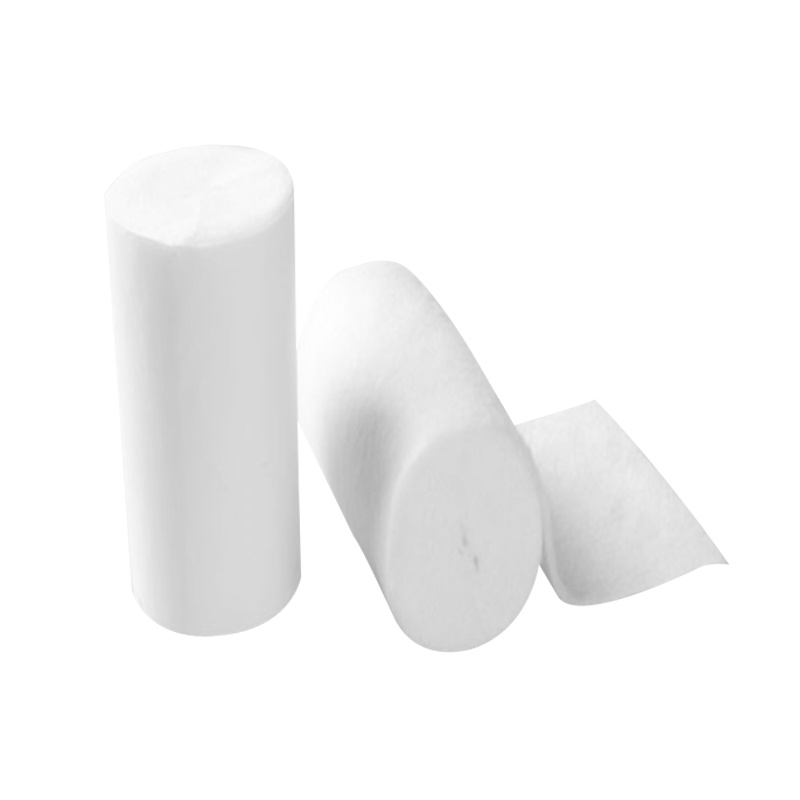How to Effectively Use Bandage Rolls for Sprains and Strains: A Comprehensive Guide
Bandage rolls play a pivotal role in the treatment of sprains and strains. By providing support, compression, and stabilization, they can significantly enhance recovery. Here's why they are essential:
- **Support**: Bandages help immobilize the injured area, reducing stress on the affected ligaments or muscles.
- **Compression**: This minimizes swelling and bruising, promoting better blood circulation.
- **Protection**: Bandages shield the injury from external elements and further trauma.
- **Pain Relief**: Compression can alleviate pain by minimizing movement in the injured area.
Using bandage rolls correctly can expedite healing and allow individuals to return to their regular activities sooner.

Types of Bandage Rolls
There are various types of bandage rolls available, each serving different purposes. Understanding these aids in selecting the right one for your needs:
- **Elastic Bandages**: These stretchable bandages offer good compression and flexibility. They are ideal for both sprains and strains.
- **Cotton Gauze Bandages**: These are absorbent and useful for securing dressings or providing light support. They can be layered for better compression.
- **Self-Adhesive Bandages**: These bandages stick to themselves and are convenient for quick application without the need for clips or tape.
- **Cohesive Bandages**: These stick to themselves but not to the skin, making them easy to remove without pain.
Choosing the right type of bandage roll is key to effective injury management.
How to Prepare for Bandaging
Preparation is crucial for effective bandaging. Here are the essential steps to follow:
1. **Gather Your Materials**: Before starting, ensure you have all necessary supplies ready, including the bandage roll, scissors, and optional padding material.
2. **Clean the Injured Area**: If possible, clean the injury site with soap and water to prevent infection.
3. **Assess the Injury**: Determine the severity of the sprain or strain. If there is severe pain, extensive swelling, or inability to move the joint, consider seeking medical attention.
4. **Position the Person Comfortably**: Make sure the injured person is seated or lying comfortably to reduce tension on the injury.
Taking these steps will set the stage for a successful bandaging process.
Step-by-Step Instructions for Bandaging Sprains
When dealing with a sprain, follow these detailed instructions for effective bandaging:
1. **Position the Joint**: Ensure the joint is in a neutral position, neither fully extended nor fully flexed.
2. **Start Wrapping**: Begin wrapping the bandage around the area, starting from just below the injury site and moving upward. This helps to anchor the bandage in place.
3. **Overlap Layers**: As you wrap, overlap each layer by about half of its width to provide adequate support and compression.
4. **Secure the Bandage**: Once you've wrapped the area sufficiently (usually 3-4 layers), secure the end of the bandage with adhesive tape or clips, ensuring it’s not too tight to restrict blood flow.
5. **Check for Circulation**: After securing, check for proper circulation. The area should feel snug but not painful; if it changes color or feels cold, loosen the bandage.
Following these simple steps ensures that the sprained area receives the necessary support.
Step-by-Step Instructions for Bandaging Strains
Strains require a slightly different approach when bandaging:
1. **Rest the Affected Area**: Encourage the individual to rest the strained muscle. Avoid unnecessary movement.
2. **Apply a Cold Pack**: If swelling is present, applying a cold pack for 15-20 minutes prior to bandaging can help reduce inflammation.
3. **Begin Wrapping**: Start wrapping the bandage around the strained muscle, beginning at the bottom and moving toward the top.
4. **Maintain Tension**: Apply consistent tension while wrapping, making sure not to wrap too tightly. The bandage should be snug but allow for blood circulation.
5. **Secure the Bandage**: Finish wrapping by securing the end of the bandage. Ensure there’s no pinching or discomfort.
Properly bandaging strains can significantly alleviate discomfort and promote a quicker recovery.
Tips for Effective Bandaging Techniques
To maximize the effectiveness of your bandaging technique, consider these expert tips:
- **Learn the Right Technique**: Watching tutorial videos or consulting a medical professional can enhance your bandaging skills.
- **Use Padding**: Adding padding around bony areas can prevent irritation and improve comfort.
- **Keep It Dry**: Moisture can weaken the bandage and increase the risk of infection. Keep the area dry.
- **Adjust as Needed**: If swelling increases after bandaging, adjust the bandage to avoid restricting circulation.
These tips will ensure that you achieve the best results from your bandaging efforts.
When to Seek Professional Help
While many sprains and strains can be managed at home, certain situations require professional intervention. Seek medical attention if:
- There is severe pain or inability to bear weight on the injured area.
- Swelling does not subside after 48 hours.
- The injury appears deformed or there’s an open wound.
- Numbness or tingling occurs in the affected area.
Recognizing when to seek help is crucial for preventing further complications.
Frequently Asked Questions
1. How tight should a bandage be for a sprain?
The bandage should be snug but not too tight. If it restricts blood flow, causing numbness or tingling, it needs to be loosened.
2. Can I leave a bandage on overnight?
Yes, but it is advisable to check the tightness and circulation regularly, especially if swelling is present.
3. How long should I keep a bandage on a strain?
Generally, it can be kept on for 48-72 hours, but this may vary based on individual recovery.
4. Should I elevate the injured area while bandaging?
Yes, elevating the injured area can help reduce swelling and promote healing.
5. Is it necessary to use a bandage for mild sprains and strains?
While not always necessary for mild injuries, a bandage can provide support and reduce discomfort.

评论
发表评论